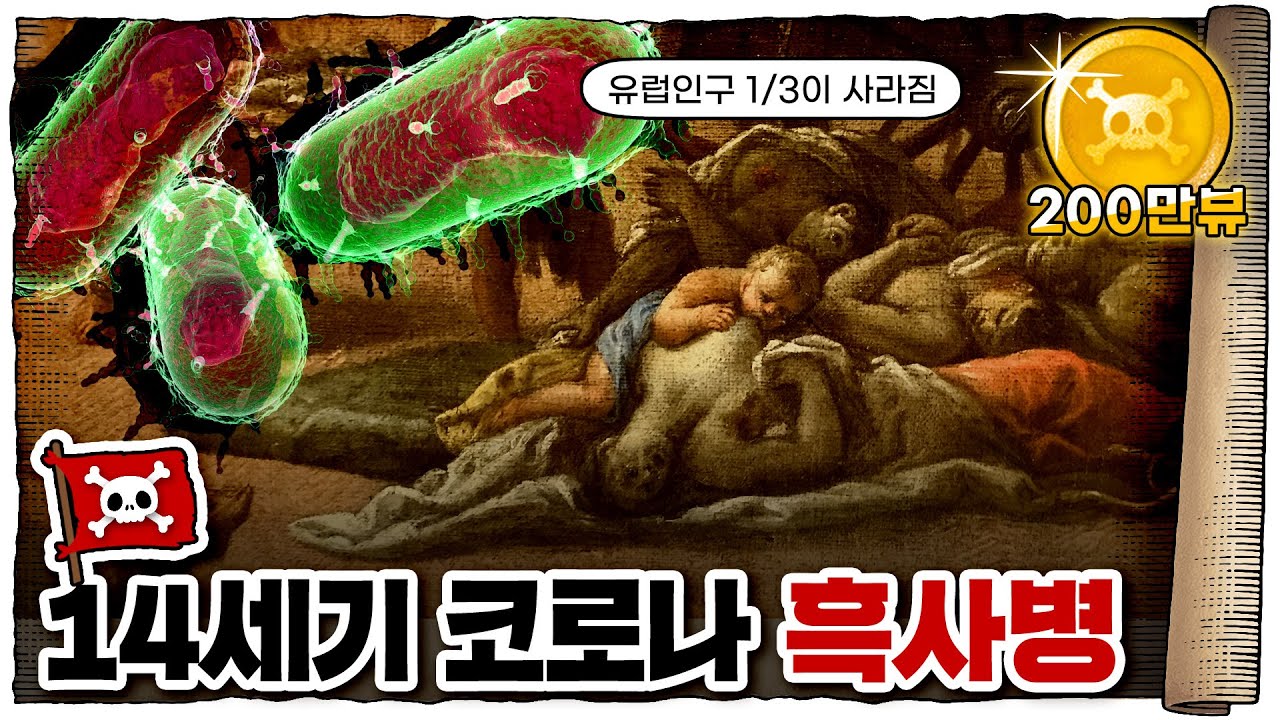The past, present and future of the bubonic plague - Sharon N. DeWitte
Summary
TLDRThe Black Death, a devastating epidemic in the 14th century, annihilated nearly 50% of Europe's population, profoundly reshaping society and biology. Unlike modern localized outbreaks, the Black Death spread rapidly, exacerbated by a weakened population facing famine and poor health. This catastrophe led to improved living conditions and social mobility for survivors, undermining feudalism. Biologically, the epidemic altered the gene pool, potentially enhancing resistance to diseases. While antibiotics have diminished the threat of such pandemics, the ongoing presence of bubonic plague and emerging drug-resistant strains underscore the importance of understanding the Black Death to prepare for future health crises.
Takeaways
- 🦠 The Black Death, which occurred in the 14th century, wiped out nearly 50% of Europe's population and is one of history's deadliest epidemics.
- 🌍 The disease spread rapidly from China through Asia, the Middle East, Africa, and Europe, showcasing its global impact.
- 🧬 Both the Black Death and the earlier Plague of Justinian were caused by the same bacterium, *Yersinia pestis*.
- ⚠️ The Black Death was significantly more deadly than modern outbreaks, which typically kill no more than 3% of the population.
- 👥 Unlike modern instances of the plague that are localized, the Black Death spread primarily through person-to-person contact.
- 🌡️ The population growth during the High Middle Ages made Europe vulnerable to the epidemic due to high fertility rates and reduced harvests.
- 🍞 The Black Death led to better living standards for survivors, including more food, better pay, and improved health.
- 📈 The epidemic weakened feudalism and contributed to social mobility and political reforms in Europe.
- 🧬 The loss of the most vulnerable individuals altered the gene pool, possibly leading to increased immunity against diseases in survivors.
- 🔍 Studying the Black Death helps us understand historical societal changes and prepares us for potential future epidemics.
Q & A
What was the Black Death, and when did it occur?
-The Black Death was a devastating epidemic that occurred in the 14th century, wiping out nearly 50% of the European population in just four years.
What caused the Black Death?
-The Black Death was caused by the bacterium Yersinia pestis, which has also been responsible for earlier outbreaks, including the Plague of Justinian in 541 CE.
How does the spread of the Black Death differ from modern instances of plague?
-While modern instances of plague typically remain localized and spread slowly through rodent fleas, the Black Death spread rapidly between humans, likely through direct contact.
What factors contributed to the high mortality rate during the Black Death?
-A combination of high fertility rates, reduced harvests due to climatic changes, and poor living conditions left many Europeans vulnerable to infection during the Black Death.
What societal changes occurred as a result of the Black Death?
-The rapid loss of population led to improved economic conditions, better living standards for survivors, increased social mobility, and weakened feudalism, ultimately leading to political reforms.
What biological impact did the Black Death have on the population?
-The death of many frail and vulnerable individuals resulted in a population with a different gene pool, potentially including genes that helped survivors resist diseases.
How has our understanding of the Black Death changed with modern research?
-Modern research has focused on the genetic consequences of the Black Death, aiming to discover mutations that may confer immunity to multiple pathogens, which could be beneficial for contemporary medicine.
What advancements have been made in combating plague since the time of the Black Death?
-The threat of an epidemic on the scale of the Black Death has been largely eliminated due to antibiotics, although bubonic plague still causes a few thousand deaths worldwide each year.
Why is studying the Black Death important for the future?
-Understanding the causes and effects of the Black Death can help us learn from the past and potentially prevent similar pandemics in the future.
What are some current concerns regarding the plague?
-The emergence of drug-resistant strains of Yersinia pestis poses a threat, raising concerns about the possibility of returning to darker times.
Outlines

此内容仅限付费用户访问。 请升级后访问。
立即升级Mindmap

此内容仅限付费用户访问。 请升级后访问。
立即升级Keywords

此内容仅限付费用户访问。 请升级后访问。
立即升级Highlights

此内容仅限付费用户访问。 请升级后访问。
立即升级Transcripts

此内容仅限付费用户访问。 请升级后访问。
立即升级浏览更多相关视频

How To Solve Cloze Test | Best Tips to Solve Cloze Test | Gopal Verma Sir

The Black Death

The Black Death - The Great Bubonic Plague of the Middle Ages

💀 흑사병이 인류 사회를 뒤바꾼 과정! / 💀 인류 최악의 전염병 흑사병 총정리

Fome, peste e guerra: o século XIV na Europa medieval - H5M#35

History's Turning Points 1347 AD The Black Death
5.0 / 5 (0 votes)
